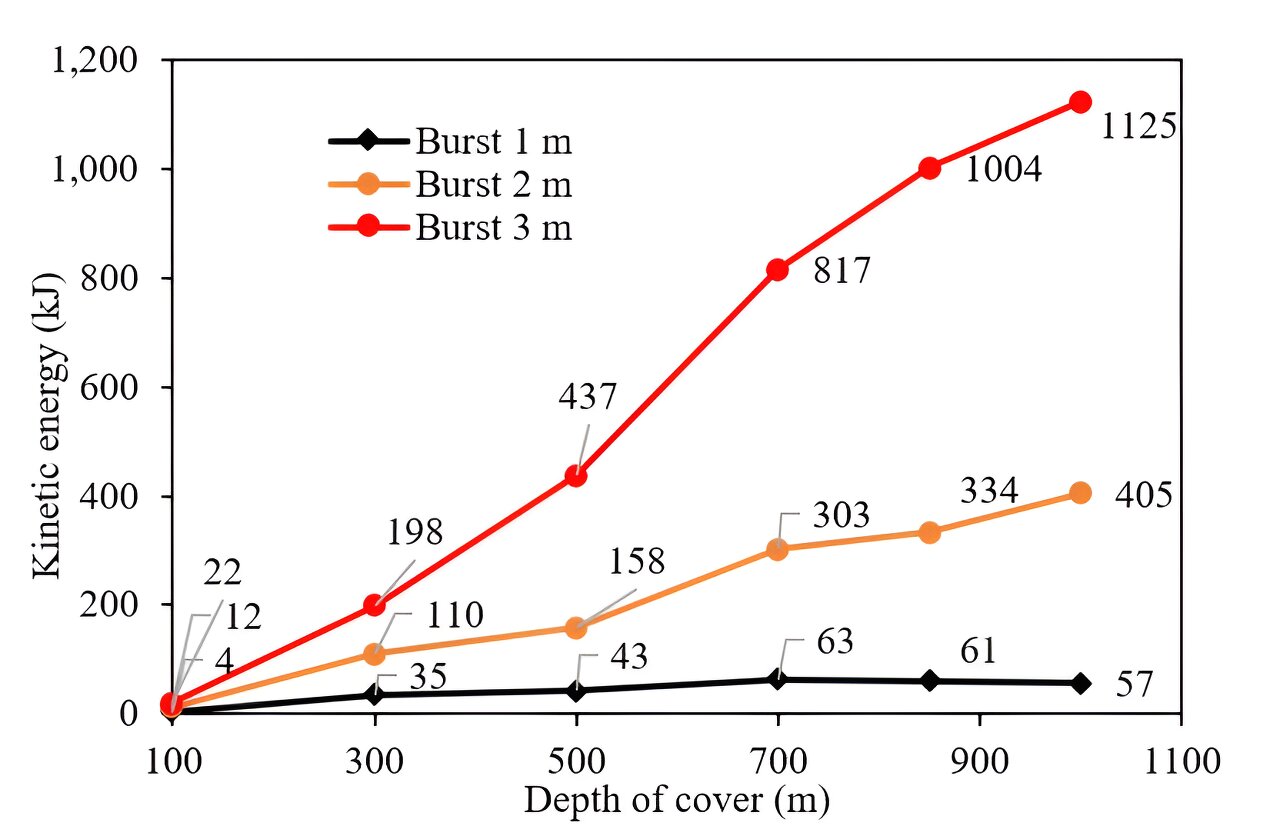Article by KeAi Communications Co.
Catastrophic dynamic rock failure, commonly known as rock or coal burst, poses a complex challenge in civil tunneling and mining. These bursts occur when an overstressed rock mass or coal seam undergoes a volatile and uncontrolled energy release during the mining process. While many factors contribute to coal bursts, the mechanism is closely associated with energy storage and release.
In a recent study published in Geohazard Mechanics, researchers from the University of New South Wales School of Minerals and Energy Resources Engineering conducted a comprehensive review of potential energy sources that can trigger coal bursts. They identified two primary sources: the strain and potential energy stored in the surrounding coal mass, and the seismic energy emitted due to geological discontinuities.
“Coal burst events are relatively uncommon in the Australian coal industry, but their occurrence seems to be increasing, particularly in deeper mines,” explains Ismet Canbulat, senior author of the study. “The industry has a qualitative understanding of these events, relying on international experiences that may not align with Australian conditions.”
The study employed contemporary analytical and computational methodologies to determine the required energy magnitude for coal burst initiation. It considered various energy sources and their respective release mechanisms. Additionally, the researchers applied the concept of energy balance to calculate the seismic energy emitted during mining and the kinetic energy of ejected rock or coal in different burst scenarios. This energy-based approach can assist in evaluating coal burst hazards in diverse geological and mining domains.
“Our findings enable quantitative risk assessment of coal burst hazards under different mining conditions,” adds Canbulat.
More information: Chunchen Wei et al, Quantitative assessment of energy changes in underground coal excavations using numerical approach, Geohazard Mechanics (2022). DOI: 10.1016/j.ghm.2022.11.003
Provided by KeAi Communications Co.
Citation: Quantifying coal burst risks: An energy-based approach to understanding geological and mining domain impacts (2023, July 31) retrieved 1 August 2023 from https://phys.org/news/2023-07-quantifying-coal-energy-based-approach-geological.html
This document is subject to copyright. Apart from any fair dealing for the purpose of private study or research, no part may be reproduced without written permission. The content is provided for information purposes only.
Denial of responsibility! TechCodex is an automatic aggregator of the all world’s media. In each content, the hyperlink to the primary source is specified. All trademarks belong to their rightful owners, and all materials to their authors. For any complaint, please reach us at – [email protected]. We will take necessary action within 24 hours.

Jessica Irvine is a tech enthusiast specializing in gadgets. From smart home devices to cutting-edge electronics, Jessica explores the world of consumer tech, offering readers comprehensive reviews, hands-on experiences, and expert insights into the coolest and most innovative gadgets on the market.


